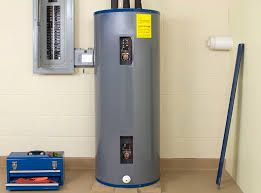We have stumbled on this post on How to Maintain Your Water Heater & Prolong its Life listed below on the web and concluded it made perfect sense to share it with you on this site.

Warm water is crucial for daily comfort, whether it's for a refreshing shower or washing recipes. To guarantee your warm water system runs efficiently and lasts longer, routine maintenance is crucial. This write-up provides practical suggestions and insights on exactly how to keep your home's warm water system to prevent interruptions and pricey fixings.
Intro
Keeping your home's warm water system might seem difficult, yet with a few easy actions, you can guarantee it operates efficiently for many years to find. This overview covers whatever from comprehending your hot water system to DIY maintenance suggestions and understanding when to hire professional help.
Significance of Maintaining Your Hot Water System
Regular upkeep not just prolongs the life expectancy of your hot water system however also ensures it operates successfully. Disregarding maintenance can lead to lowered performance, greater power expenses, and also early failure of the system.
Indicators Your Warm Water System Demands Maintenance
Understanding when your hot water system requires focus can avoid significant issues. Watch out for signs such as inconsistent water temperature, unusual noises from the heater, or corroded water.
Flushing the Hot Water Heater
Flushing your water heater eliminates sediment build-up, enhancing effectiveness and lengthening its life.
Monitoring and Replacing Anode Rods
Anode poles protect against rust inside the tank. Inspecting and changing them when broken is vital.
Complicated Issues Calling For Expert Help
Instances include major leakages, electric problems, or if your water heater is continually underperforming.
Routine Specialist Upkeep Advantages
Specialist maintenance can consist of complete evaluations, tune-ups, and ensuring conformity with security criteria.
Checking and Adjusting Temperature Setups
Changing the temperature level setups ensures ideal efficiency and security.
Do It Yourself Tips for Upkeep
You can execute a number of upkeep jobs yourself to keep your warm water system in top problem.
Checking for Leakages
Frequently inspect pipes and links for leakages, as these can lead to water damage and greater costs.
Comprehending Your Warm Water System
Before diving right into maintenance jobs, it's valuable to recognize the basic elements of your warm water system. Generally, this consists of the hot water heater itself, pipes, anode rods, and temperature level controls.
Regular Monthly Upkeep Tasks
Regular monthly checks can assist capture small issues before they escalate.
Evaluating Stress Alleviation Valves
Testing the pressure relief valve ensures it works properly and stops too much pressure buildup.
Insulating Pipes
Protecting warm water pipelines lowers heat loss and can save energy.
When to Call a Specialist
While DIY maintenance is helpful, some concerns call for expert expertise.
Final thought
Routine upkeep of your home's warm water system is crucial for effectiveness, long life, and cost savings. By following these ideas and recognizing when to look for specialist aid, you can make certain a reliable supply of hot water without unexpected interruptions.
How to Maintain an Instant Hot Water Heater
Before tinkering with your hot water heater, make sure that it’s not powered on. You also have to turn off the main circuit breaker and shut off the main gas line to prevent accidents. Also turn off the water valves connected to your unit to prevent water from flowing into and out of the appliance. 2. When you’re done, you have to detach the purge valves’ caps. These look like the letter “T” and are situated on either side of the water valves. Doing so will release any pressure that has accumulated inside the valves while at the same time avoid hot water from shooting out and burning your skin. 3. When the purge valves’ caps are removed, you have to connect your hosing lines to the valves. Your unit should have come with three hoses but if it didn’t, you can purchase these things from any hardware or home repair shops. You can also get them from retail stores that sell water heating systems. Read the user’s manual and follow it to complete this task properly. When the hosing lines are connected, open the purge port’s valves. 4. You should never use harsh chemical cleaners or solutions when cleaning your unit. Make use of white vinegar instead. It should be undiluted and you’ll probably use about 2 gallons. 5. Now flush your water heater. This task should probably take about 40 minutes. We can’t give you specific directions for this because the procedure is carried out depending on the type, model and brand of your heater. With that being said, refer to the user’s manual. 6. When you’re done draining the unit, you have to turn off the purge port valves again. Remove the hosing lines that you earlier installed on each of the water valves. Put the valve caps (purge port) back in their respective places and be very careful so as not to damage the rubber discs that are found inside these caps. 7. Now that everything’s back in place, check your user’s manual again to find out how to reactivate your water heating system. 8. Once it is working, turn one of your hot water faucets on just to let air pass through the heater’s water supply pipes. Leave the tap on until water flows smoothly out of it. https://www.orrplumbing.com/blog/2014/september/how-to-maintain-an-instant-hot-water-heater/

We had been shown that editorial on Tips on Maintaining a Water Heater through a good friend on our other web property. Enjoyed reading our entry? Please quickly share it. Let someone else check it out. Thank-you for your time invested reading it.
Show Details